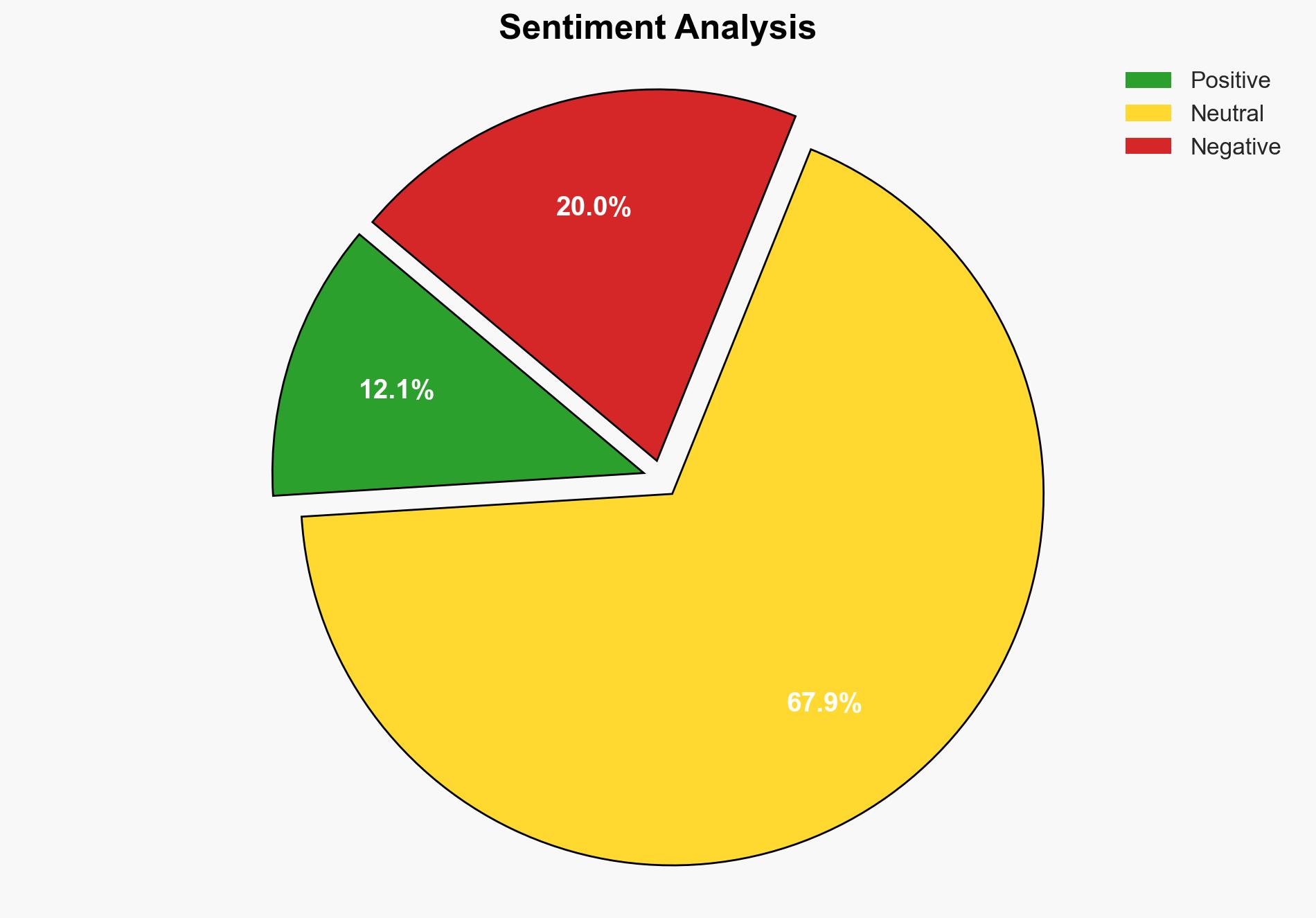A Single HIMARS Strike May Have Taken Out Three North Korean Wonder Weapon Howitzers In Kursk – Forbes
Published on: 2025-03-19
Intelligence Report: A Single HIMARS Strike May Have Taken Out Three North Korean Wonder Weapon Howitzers In Kursk – Forbes
1. BLUF (Bottom Line Up Front)
A coordinated strike by Ukrainian forces using HIMARS may have successfully neutralized three North Korean howitzers in Kursk, Russia. This event highlights the ongoing military cooperation between North Korea and Russia, with significant implications for regional stability and international relations. The strike demonstrates the effectiveness of Ukrainian drone and artillery coordination, potentially altering the strategic balance in the region.
2. Detailed Analysis
The following structured analytic techniques have been applied for this analysis:
General Analysis
The Ukrainian military’s use of unmanned drones to identify and target North Korean artillery assets in Kursk represents a significant tactical achievement. The destruction of these howitzers, described as “wonder weapons,” could degrade Russian artillery capabilities in the region. The presence of North Korean military equipment and personnel in Russia underscores the deepening military ties between the two nations. This collaboration may be a response to Russia’s heavy losses in artillery and equipment, necessitating external support.
3. Implications and Strategic Risks
The strike has several implications for regional security and international relations:
- National Security: The presence of North Korean military assets in Russia poses a direct challenge to regional stability and could provoke further military escalations.
- Regional Stability: The collaboration between Russia and North Korea may lead to increased tensions with neighboring countries and complicate diplomatic efforts to resolve the conflict.
- Economic Interests: The ongoing conflict and military alliances may disrupt trade routes and economic activities in the region, affecting global markets.
4. Recommendations and Outlook
Recommendations:
- Enhance intelligence-sharing mechanisms among allied nations to monitor and counteract the military cooperation between Russia and North Korea.
- Consider implementing sanctions or diplomatic measures to deter further military support from North Korea to Russia.
- Invest in advanced surveillance and reconnaissance technologies to improve real-time battlefield awareness.
Outlook:
Best-case scenario: Diplomatic efforts lead to a reduction in military cooperation between Russia and North Korea, stabilizing the region.
Worst-case scenario: Increased military collaboration results in escalated conflicts, drawing in additional international actors.
Most likely outcome: Continued low-intensity conflicts with sporadic escalations, maintaining pressure on regional security and economic interests.
5. Key Individuals and Entities
The report references significant individuals and entities involved in the ongoing conflict:
- Volodymyr Zelensky
- Donald Trump
- Pyongyang
- Moscow
These individuals and entities play crucial roles in shaping the geopolitical landscape and influencing the conflict’s trajectory.





